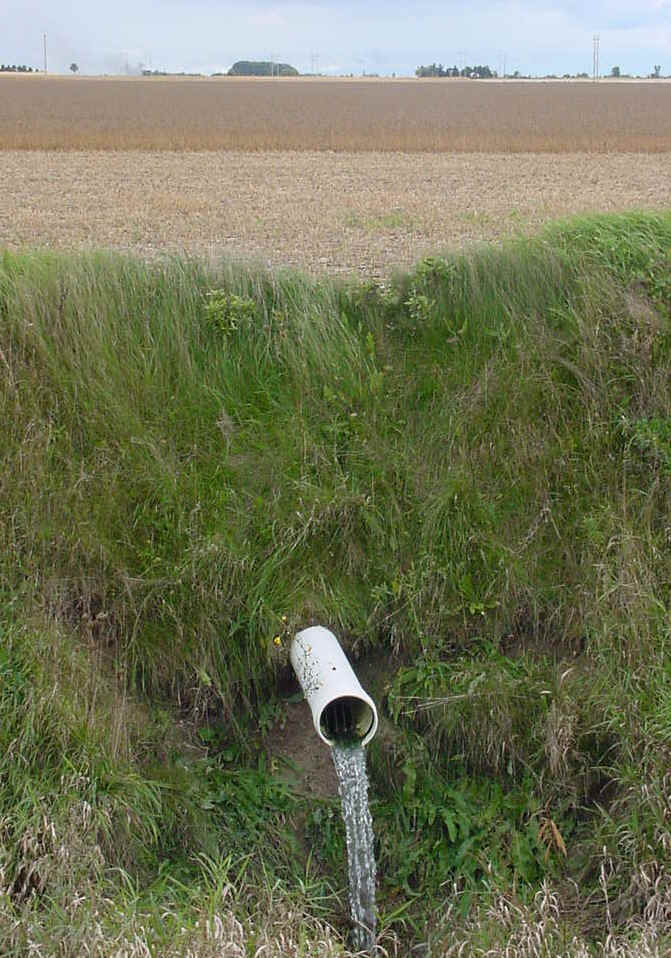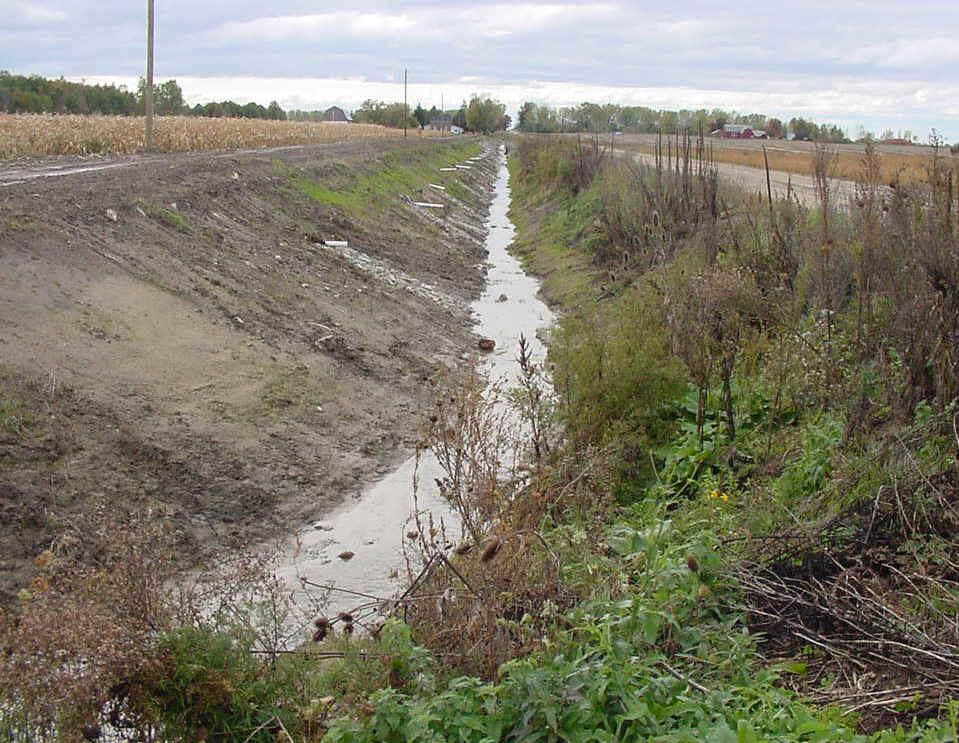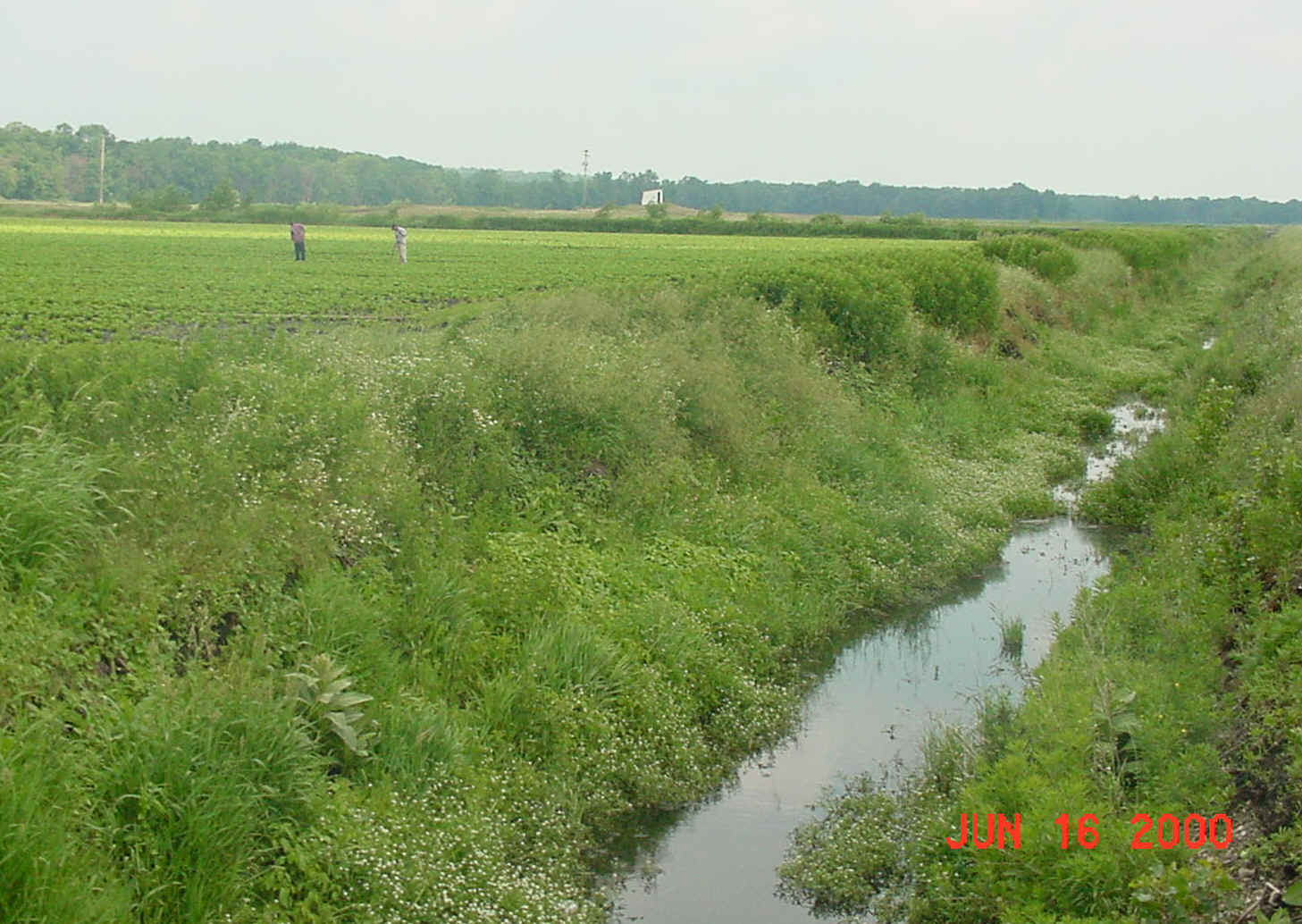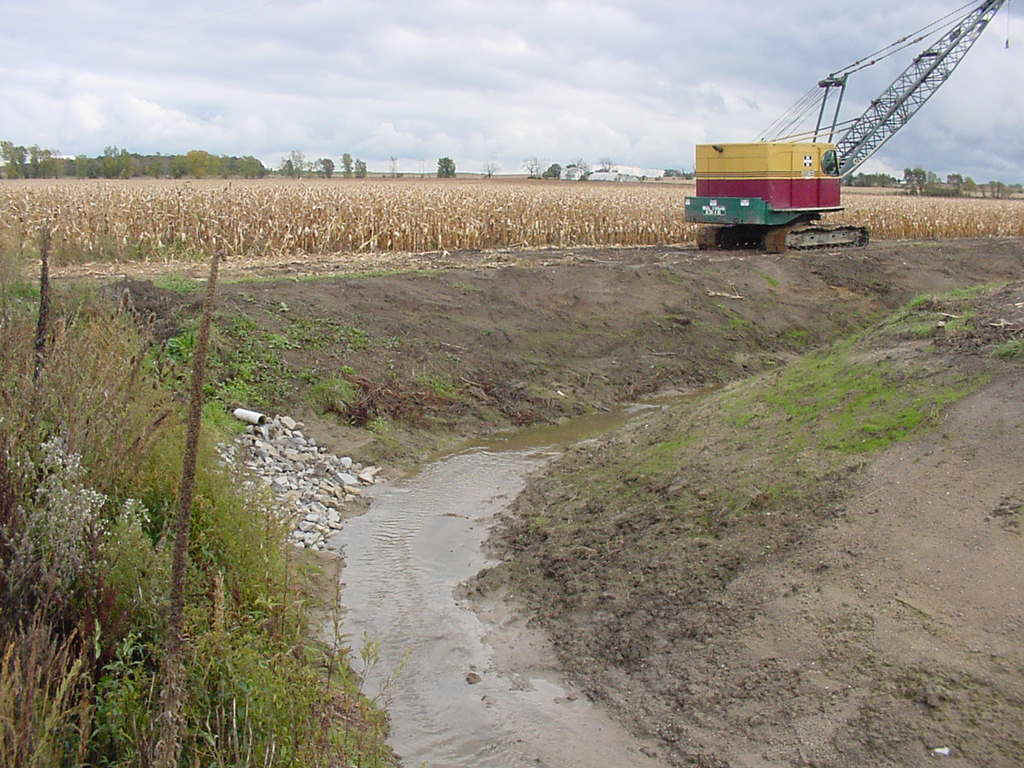DRAINAGE OF WET SOILS
In order to maximize yields, farmers often try to tightly control the water regime in
their fields. This is done in two main ways: irrigation,
and subsoil drainage. Subsoil drainage is accomplished by laying perforated plastic
pipe, called drain tile, at a prescribed depth in the soil. If the water table rises
to this level, the excess water flows into the drain tile and flows along (within) the
tile, to a drainage ditch (below), from which it exits the field.

Drain tiles are installed every few meters in wet fields, forming a tile "network" of sorts. All the tile eventually drain to larger and larger tile, and then finally into a drainage ditch. The ditch takes the water and funnels it into a nearby stream.

Source:
Photograph by Randy Schaetzl, Professor of Geography - Michigan State University
The image below shows workers weeding a field of lettuce, on Histosols,
which are very poorly-drained soils that normally would be under water at this time of
year. The level of water in the ditch marks the current water table level.

Drainage ditches need to be maintained, i.e., occasionally cleaned of sediment and
plant debris. The ditch below has just been cleaned out. The maintenance is
usually paid for by the office of the County Drain Commissioner, which collects taxes from
the farmers to pay for the service.

This material has been compiled for educational use only, and may not be reproduced without permission. One copy may be printed for personal use. Please contact Randall Schaetzl (soils@msu.edu) for more information or permissions.